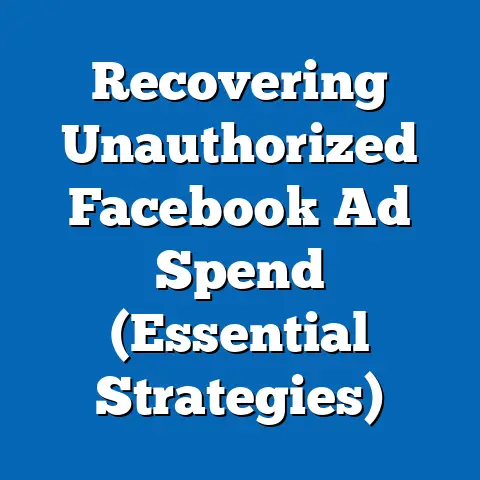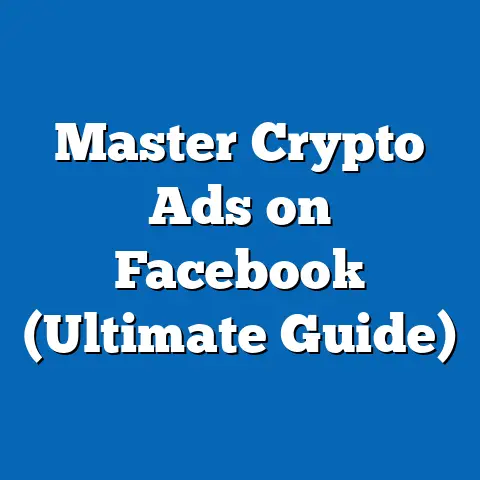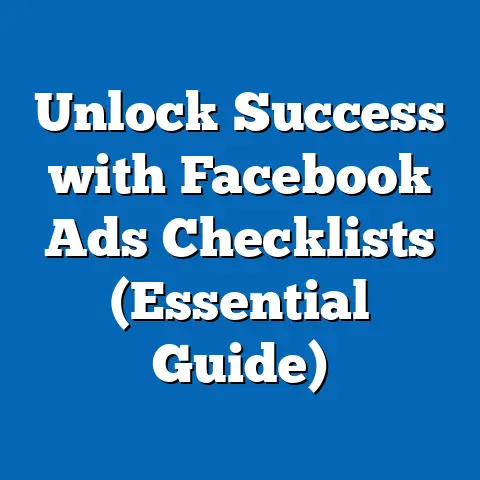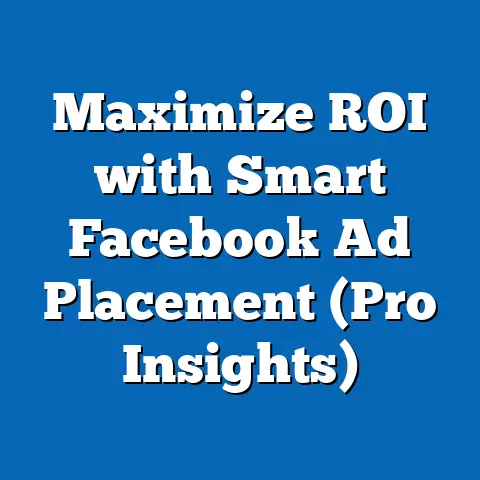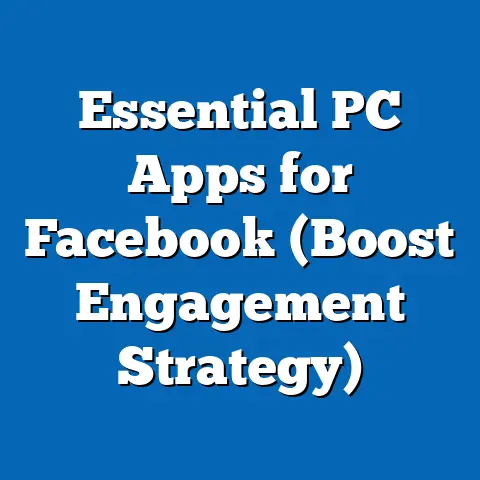Master Facebook Ads Copy (Proven Strategies Unveiled)
Have you ever felt like you’re shouting into the void with your Facebook ads? I know I have. I remember one campaign I ran for a local bakery; I thought the photos of their decadent cakes were enough. I poured money into it, only to see crickets. The problem? My copy was bland, generic, and utterly forgettable. It was a painful lesson, but it taught me the critical importance of crafting compelling copy that stops scrollers in their tracks.
In the world of Facebook advertising, where attention spans are shorter than a TikTok video, your ad copy is your secret weapon. It’s the bridge between your product and your potential customer, the siren song that lures them in. This article is your guide to mastering that siren song. I’m going to unveil proven strategies for crafting Facebook Ads copy that not only grabs attention but also drives results.
Understanding the Facebook Ads Landscape
Facebook isn’t just a social media platform; it’s an advertising behemoth. With billions of users globally, it offers unparalleled reach for businesses of all sizes. According to Statista, Facebook’s advertising revenue reached nearly $117 billion in 2023, highlighting its dominance in the digital advertising space. But this also means intense competition for user attention.
The key is understanding the various ad formats Facebook offers. You have:
- Image Ads: Simple yet effective, relying on a compelling visual and concise copy.
- Video Ads: Perfect for storytelling and showcasing product features.
- Carousel Ads: Allow you to display multiple images or videos, ideal for highlighting different products or aspects of a service.
- Collection Ads: Designed for mobile shopping, these ads feature a main image or video with related products below.
Each format demands a tailored copywriting approach. A video ad script needs to be engaging from the first second, while an image ad needs a headline that cuts through the noise.
But no matter the format, your copy lives and dies by your targeting. You can have the most brilliantly written ad in the world, but if it’s shown to the wrong audience, it’s as good as invisible. Audience segmentation, based on demographics, interests, behaviors, and even custom audiences built from your existing customer data, is the foundation upon which effective copywriting is built.
Takeaway: Facebook offers diverse ad formats, but understanding your audience and tailoring your copy to each format is crucial for success.
The Psychology of Effective Copy
Great Facebook ad copy isn’t just about clever wordplay; it’s about understanding the human mind. It’s about tapping into psychological triggers that motivate people to take action. I’ve found that understanding these triggers can be the difference between an ad that gets ignored and one that goes viral (relatively speaking, of course!).
Here are a few key psychological principles to consider:
- Curiosity: “You won’t believe what happened next…” We’re wired to want to know the end of the story. Ads that pique curiosity without revealing everything can be incredibly effective.
- Urgency: “Limited time offer!” “Only 3 left in stock!” Creating a sense of urgency can compel people to act now rather than later.
- Social Proof: “Join thousands of satisfied customers!” People are more likely to take action if they see others doing the same. Testimonials, reviews, and social media mentions all contribute to social proof.
- Pain Points: Identify your audience’s problems and offer a solution. “Tired of struggling with [problem]? Our product can help!”
- Desire: What does your audience truly want? Happiness? Success? Security? Tap into those desires and show how your product can help them achieve their goals.
For example, I saw an ad for a language learning app that brilliantly used the curiosity trigger. The headline read, “Learn to speak Spanish in 3 weeks? I didn’t believe it either…” It immediately grabbed my attention because it challenged my assumptions.
Another example is an ad I saw for a marketing course that highlighted the pain point of struggling to generate leads. The copy directly addressed the frustration of spending hours on social media with little to no results, and then presented their course as the solution.
Takeaway: Understand the psychological principles that drive human behavior and incorporate them into your Facebook ad copy.
Crafting Your Ad Copy
Now comes the fun part: putting pen to paper (or fingers to keyboard) and crafting your ad copy. This is where all the theory and strategy come to life. I’ve learned over the years that there’s no one-size-fits-all formula, but there are some key elements that every effective Facebook ad needs.
Headlines
Your headline is the first (and often only) thing people will read. It needs to be attention-grabbing, concise, and relevant to your target audience. Think of it as the hook that reels them in.
Tips for crafting killer headlines:
- Use numbers: “5 Tips for…” “3 Secrets to…” Numbers instantly make your headline more scannable and appealing.
- Ask a question: “Are you tired of…” Questions engage the reader and encourage them to think about their own situation.
- Make a bold statement: “This is the only product you’ll ever need for…” Bold statements can be risky, but they can also pay off big if they resonate with your audience.
- Use strong verbs: “Discover,” “Transform,” “Unlock.” Strong verbs create a sense of excitement and possibility.
- Keep it short and sweet: Facebook recommends headlines of 25-40 characters for optimal performance.
Examples of high-performing headlines:
- “Discover the Secret to Perfect Skin”
- “Are You Making These 5 Common Mistakes?”
- “Transform Your Body in Just 30 Days”
- “Unlock Your Full Potential with Our New Course”
Body Text
Your body text expands on your headline and provides more details about your product or service. It should be concise, persuasive, and focused on the benefits of what you’re offering.
Techniques for writing persuasive body text:
- Focus on benefits, not features: Instead of saying “Our product has a built-in timer,” say “Save time and effort with our product’s built-in timer.”
- Use clear and simple language: Avoid jargon and technical terms that your audience may not understand.
- Tell a story: Stories are more engaging and memorable than dry facts.
- Create a sense of urgency: Encourage people to take action now by highlighting limited-time offers or scarcity.
- Address potential objections: Anticipate any concerns your audience might have and address them directly in your copy.
Call to Action (CTA)
Your call to action tells people what you want them to do next. It should be clear, concise, and compelling.
Effective CTAs tailored to different objectives:
- For sign-ups: “Sign Up Now,” “Get Started Today,” “Join Our Community”
- For purchases: “Shop Now,” “Buy Now,” “Add to Cart”
- For learning more: “Learn More,” “Discover More,” “See Details”
- For lead generation: “Get a Free Quote,” “Download Our Guide,” “Contact Us”
Tone and Voice
Your tone and voice should be consistent with your brand identity and resonate with your target audience. Are you a playful and irreverent brand? Or a serious and professional one? Your ad copy should reflect that.
I once worked with a client who ran a high-end spa. Their initial ad copy was overly casual and used slang that didn’t align with their brand image. We revised the copy to be more sophisticated and elegant, and the results were immediate. They saw a significant increase in bookings from their target demographic.
Takeaway: Craft headlines that grab attention, body text that persuades, CTAs that drive action, and a tone that aligns with your brand.
A/B Testing Your Ads
A/B testing, also known as split testing, is the process of comparing two versions of an ad to see which one performs better. It’s a crucial step in optimizing your ad copy and maximizing your ROI. I consider it the scientific method of Facebook advertising – you formulate a hypothesis, test it, and refine your approach based on the results.
How to conduct A/B tests:
- Choose one element to test: Don’t try to test everything at once. Focus on one element, such as the headline, body text, or CTA.
- Create two variations: Create two versions of your ad that are identical except for the element you’re testing.
- Run your ads: Use Facebook’s A/B testing feature to run your ads simultaneously to the same audience.
- Track your results: Monitor key metrics such as click-through rate (CTR), conversion rate, and cost per acquisition (CPA).
- Analyze the data: After a sufficient amount of time (usually a week or two), analyze the data to see which version performed better.
- Implement the winner: Implement the winning version of your ad and continue testing other elements.
Interpreting results and making data-driven adjustments:
- CTR: A higher CTR indicates that your ad is more engaging and relevant to your audience.
- Conversion Rate: A higher conversion rate indicates that your ad is more effective at driving desired actions, such as sign-ups or purchases.
- CPA: A lower CPA indicates that you’re acquiring customers more efficiently.
Takeaway: A/B testing is essential for optimizing your ad copy and maximizing your ROI. Test different elements of your ad to see what resonates best with your audience.
Leveraging User-Generated Content and Testimonials
In a world saturated with advertising, people are increasingly skeptical of brands. That’s why user-generated content (UGC) and testimonials are so powerful. They provide authentic social proof that can significantly enhance your ad credibility. I’ve seen firsthand how incorporating real customer experiences can transform an ad from “just another sales pitch” to a trusted recommendation.
Strategies for incorporating UGC and testimonials:
- Feature customer reviews: Highlight positive reviews in your ad copy.
- Share customer photos and videos: Showcase real people using your product or service.
- Run contests and giveaways: Encourage customers to create content about your brand.
- Partner with influencers: Collaborate with influencers to create authentic and engaging content.
I worked with a local restaurant that was struggling to attract new customers. We decided to run a Facebook ad campaign featuring photos and videos of real customers enjoying their meals. The results were incredible. People were drawn to the authenticity of the UGC and the restaurant saw a significant increase in bookings.
Takeaway: User-generated content and testimonials provide authentic social proof that can enhance your ad credibility and drive conversions.
Ad Copy Best Practices and Common Pitfalls
To wrap things up, let’s go over some best practices and common pitfalls to avoid when writing Facebook ad copy. These are the lessons I’ve learned the hard way, and I hope they can help you avoid making the same mistakes.
Best Practices:
- Maintain brevity: Get to the point quickly and avoid unnecessary fluff.
- Use active voice: Active voice is more direct and engaging than passive voice.
- Avoid jargon: Use clear and simple language that everyone can understand.
- Focus on benefits: Highlight the benefits of your product or service, not just the features.
- Target your audience: Tailor your copy to the specific interests and needs of your target audience.
- Mobile optimization: Make sure your copy is optimized for mobile devices, as most Facebook users access the platform on their phones.
Common Pitfalls:
- Being overly promotional: Focus on providing value to your audience, not just selling your product.
- Neglecting mobile optimization: Make sure your copy is easy to read on mobile devices.
- Using generic language: Be specific and avoid clichés.
- Ignoring A/B testing: Continuously test and optimize your copy to improve performance.
I’ve seen ads that are so generic, they could be for any product or service. Avoid phrases like “high-quality” or “best in class” without backing them up with specific details.
Takeaway: Follow best practices, avoid common pitfalls, and continuously test and optimize your copy to achieve the best results.
Conclusion
Mastering Facebook Ads copy is an ongoing journey, but by understanding the principles outlined in this article, you’ll be well on your way to creating ads that grab attention, drive engagement, and generate conversions. Remember to focus on your audience, tap into psychological triggers, craft compelling headlines and body text, and continuously test and optimize your copy.
Now, go forth and create some killer Facebook ads! I’m confident that with a little practice and experimentation, you can unlock the full potential of Facebook advertising and achieve your business goals. Good luck!

